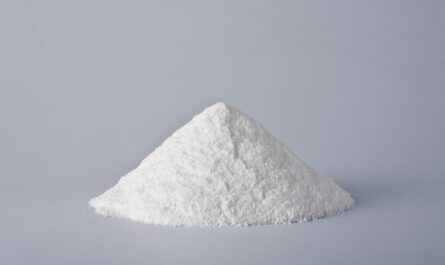Ferrous sulfate is an inorganic compound that provides elemental iron. It is an important iron supplement used to treat and prevent iron-deficiency anemia when dietary iron intake or absorption is insufficient. It contains iron in a form that can be readily absorbed by the body.
Chemical Properties and Composition
Iron (II) sulfate has the chemical formula FeSO4·7H2O. It contains iron in its ferrous (Fe2+) oxidation state bound to sulfate ions. When fully hydrated, each molecule also contains seven molecules of water, giving iron (II) sulfate its characteristic green crystals. Iron accounts for about 20% of the compound by mass.
Medical Uses of Iron (II) sulfate
As an iron supplement, Ferrous Sulfate is commonly used to treat iron-deficiency anemia. Anemia occurs when the body does not have enough healthy red blood cells due to insufficient iron. Some common causes of iron-deficiency anemia include heavy menstruation, pregnancy, low dietary iron intake, blood loss from ulcers or colon cancer. Taking iron (II) sulfate orally can replenish iron stores to produce more hemoglobin to carry oxygen in red blood cells. The supplemental iron is usually well-tolerated but may cause constipation or gastric upset in some people. Additional medications may be needed if weight loss, fatigue, or other symptoms are severe. It is also used to prevent iron deficiency in high-risk groups like infants, young children, and women of childbearing age.
Mechanism of Action and Absorption
For iron (II) sulfate to work as an iron supplement, the iron must first be absorbed from the digestive tract into the bloodstream. In the stomach, iron (II) sulfate dissolves, releasing Fe2+ ions. Ascorbic acid (vitamin C) enhances iron absorption when taken at the same time due to its ability to reduce Fe3+ to the more absorbable Fe2+. In the duodenum and upper small intestine, Fe2+ complexes with apoferritin and is transported into mucosal cells. Iron export proteins, like ferroportin, then export Fe2+ into the blood. Once in circulation, iron binds to transferrin and is carried to tissues and stored intracellularly, primarily in hepatocytes and reticulocytes in the bone marrow. The liver regulates iron levels and releases stores as needed to produce new red blood cells.
Ferrous Glycine Sulfate vs. iIon (II) sulfate
Ferrous glycine sulfate is another common form of supplemental iron. It contains glycine residues that make the compound more stable and pleasant-tasting than iron (II) sulfate alone. Some studies have found ferrous glycine sulfate may have better absorption than iron (II) sulfate when taken without food. However, other research suggests absorption rates are similar between the two when taken as recommended with food. Both compounds are inexpensive and effective options for treating and preventing iron deficiency anemia. The choice between iron (II) sulfate vs. ferrous glycine sulfate is often based on individual preferences, dietary patterns and tolerability.
Potential Side Effects of Ferrous Sulfate
Like all medications, iron (II) sulfate can potentially cause unwanted side effects in some people. Gastrointestinal upset is among the most common complaints and may include nausea, abdominal cramping, diarrhea or constipation. Taking supplements with food can help reduce gastric side effects. In rare cases, allergic reactions involving rash, itching or facial swelling may occur. Long-term, high-dose iron therapy has also been associated with increased risk of hemosiderosis, a toxic level of iron stored in tissues. As with any supplement, it is important not to exceed the recommended daily dosage without medical guidance. Iron (II) sulfate supplements should also be properly stored out of reach of young children due to risk of accidental overdose. With appropriate use as directed by a healthcare provider, iron (II) sulfate is generally safe and well-tolerated.
Precautions and Drug Interactions
The Ferrous Sulfate can interact with some medications if taken at the same time. Tetracyclines and quinolone antibiotics form insoluble complexes with iron that reduce their absorption from the gut. Therefore, these antibiotics should be taken at least 2-3 hours apart from iron supplements. Antacids containing magnesium, calcium, or aluminum can also impair iron absorption by binding minerals in the digestive tract before absorption. In addition, certain zinc and calcium supplements are best spaced out from iron therapy by a few hours. Vitamin C, as noted previously, enhances iron absorption and is safe to take together. Overall, iron supplements should be properly scheduled relative to other medications under a doctor’s guidance to optimize effectiveness and safety. People with pre-existing medical conditions should consult their healthcare team before beginning an iron regimen.
Iron (II) sulfate is an important iron supplement commonly used to treat and prevent iron-deficiency anemia. By supplementing dietary iron intake, iron (II) sulfate replenishes iron stores in the body and enables healthy red blood cell production. While gastrointestinal side effects are possible, iron (II) sulfate is generally well-tolerated when taken as directed, either acutely to treat existing anemia or long-term as a preventative measure in high-risk groups. Proper scheduling, dosing and monitoring by a medical professional can help maximize the benefits of iron (II) sulfate therapy with minimal risk. As an inexpensive and effective source of absorbable iron, iron (II) sulfate plays a valuable ongoing role in global public health.
*Note:
1. Source: Coherent Market Insights, Public sources, Desk research
2. We have leveraged AI tools to mine information and compile it



